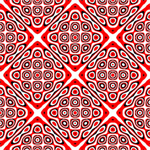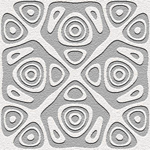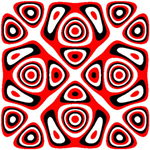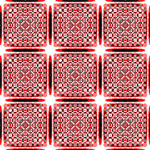After an absurdly long job search, I’ve finally found myself a comfortable place in a computational biology lab. I’ve been here a bit more than a month and thought I should mention something about what I’m doing.
I’m working for Dr. Michael Brudno in the Computational Biology Lab at the University of Toronto. At the moment, I’m developing an application for visualization and analysis of biological sequence and annotation data with a graduate student named Marc Fiume. (We just chose a name for our project today: SAVANT. I like it.) I’m also sitting in on a graduate seminar on analysis of high throughput sequencing data and attending the occasional presentation on related research at The Centre for Applied Genomics. I’ll be spending one day a week at Sick Kids hospital, in order to interact with biologists and bioinformaticians who are among the target users of SAVANT.
I’m having a great time.
This is all a huge change from the enterprise web development that is more or less what I’ve been doing since 1996. A huge change that I really needed. Sometimes you just need to start over, you know? It was getting to the point where I honestly couldn’t picture myself actually taking any of the jobs I was applying for. I couldn’t face the same-old, same-old any longer.
I’m not sure where this is all going to lead, but I’m kind of hoping to make a career in this relatively young field. I believe that my many years of experience in commercial software engineering will be useful here. I think I can have fun and make a difference. The territory is huge; the problem space practically inexhaustible. I can’t imagine getting bored any time soon. Heading off in a new direction feels exactly right. So work-wise right now, it’s all good. 
I stumbled across two nice representations today. The first is a series of images visualizing turbulence. Some of these models took millions of processor hours to compute.
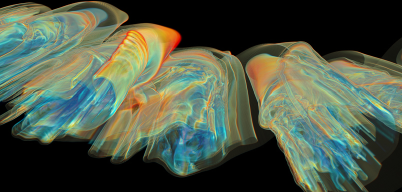
The second is a periodic table of the elements assembled out of 118 prints in various media. Sadly, no poster seems to be available just yet, but the project initiator hints that many things are in the works. Wouldn’t high school chemistry have been more fun this way?
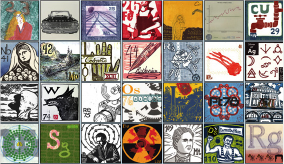
Ernst Chladni invented a way of visualizing the vibrations on a metal plate by sprinkling sand on the plate and making it vibrate using a violin bow. The sand scatters and collects at the places where the plate is not vibrating (the nodes of vibration), creating a fascinating family of visual patterns. The images below are artistic renderings of some of the many possible patterns. See more at the U Of T Physics Department and more gory details on the math from Paul Bourke—including some visualizations of what Chladni patterns in three dimensions would look like.
[Unfortunately, I haven’t yet found a good applet which demonstrates this behaviour. (Sounds like a perfect project for proce55ing!) If anyone knows of a nice visual demonstration, please let me know and I’ll update this entry.]
It’s freakin’ cold outside, so might as well enjoy the view…

This image (click for full view and explanation) is actually part of the first annual Art of Science competition at Princeton University: “Celebrating the aesthetics of research and the ways in which science and engineering inform art.”
This animated piece on Ben & Jerry’s research into environmentally-friendly alternatives to refrigerants is cute, educational, and…a little weird. Personally, I like the “really nice cow who doesn’t talk much” the best.
Posts and pointers on software, art, math, noise, and other obsessions…




